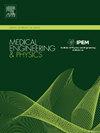A new network structure for Parkinson's handwriting image recognition
IF 1.7
4区 医学
Q3 ENGINEERING, BIOMEDICAL
引用次数: 0
Abstract
Parkinson's disease (PD) remains a condition without a cure, though its early manifestations can be managed effectively by medical professionals. This underscores the significance of early detection of PD. It has been widely demonstrated that handwriting analysis is a promising avenue for early PD diagnosis. In recent research, there has been a pivot towards leveraging artificial intelligence (AI) technologies for analyzing handwriting images to aid in diagnosing the disease. This study introduces an innovative network architecture specifically designed to capture the nuances of tremor and irregular spacing characteristic of PD patients' handwriting. By incorporating an attention mechanism, this network is capable of prioritizing different areas within the handwriting feature map, according to their diagnostic relevance. This approach significantly enhances the accuracy of detecting PD through handwriting analysis, with our model achieving an impressive mean accuracy rate of 96.5 %. When compared to traditional convolutional neural networks, our attention-based continuous convolutional network model demonstrates a substantial increase in diagnostic precision.
帕金森手写图像识别的新网络结构
帕金森氏症(PD)仍然是一种无法治愈的疾病,尽管它的早期表现可以由医疗专业人员有效地控制。这强调了早期发现帕金森病的重要性。笔迹分析已被广泛证明是早期帕金森病诊断的一个有前途的途径。在最近的研究中,有一个重点是利用人工智能(AI)技术来分析手写图像,以帮助诊断疾病。本研究介绍了一种创新的网络架构,专门用于捕捉PD患者笔迹的震颤和不规则间距特征的细微差别。通过整合注意力机制,该网络能够根据其诊断相关性对手写特征图中的不同区域进行优先级排序。该方法显著提高了通过笔迹分析检测PD的准确性,我们的模型达到了令人印象深刻的96.5%的平均准确率。与传统的卷积神经网络相比,我们的基于注意力的连续卷积网络模型在诊断精度上有了很大的提高。
本文章由计算机程序翻译,如有差异,请以英文原文为准。
求助全文
约1分钟内获得全文
求助全文
来源期刊

Medical Engineering & Physics
工程技术-工程:生物医学
CiteScore
4.30
自引率
4.50%
发文量
172
审稿时长
3.0 months
期刊介绍:
Medical Engineering & Physics provides a forum for the publication of the latest developments in biomedical engineering, and reflects the essential multidisciplinary nature of the subject. The journal publishes in-depth critical reviews, scientific papers and technical notes. Our focus encompasses the application of the basic principles of physics and engineering to the development of medical devices and technology, with the ultimate aim of producing improvements in the quality of health care.Topics covered include biomechanics, biomaterials, mechanobiology, rehabilitation engineering, biomedical signal processing and medical device development. Medical Engineering & Physics aims to keep both engineers and clinicians abreast of the latest applications of technology to health care.
 求助内容:
求助内容: 应助结果提醒方式:
应助结果提醒方式:


